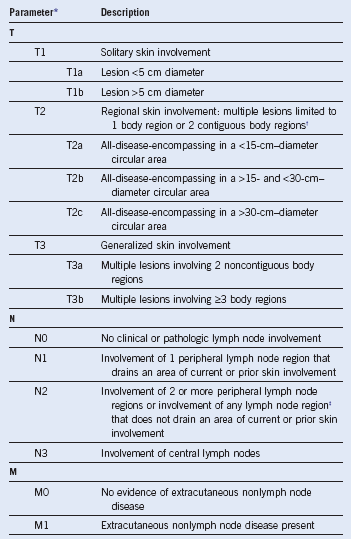Chapter 33 Clinical Manifestations and Treatment of Marginal Zone Lymphomas (Extranodal/Malt, Splenic, And Nodal)
Table 33-2 ISCL/EORTC Staging System for Cutaneous Lymphomas Other Than Mycosis Fungoides and Sézary Syndrome4

Chapter 33 Clinical Manifestations and Treatment of Marginal Zone Lymphomas (Extranodal/Malt, Splenic, And Nodal)
Table 33-2 ISCL/EORTC Staging System for Cutaneous Lymphomas Other Than Mycosis Fungoides and Sézary Syndrome4

